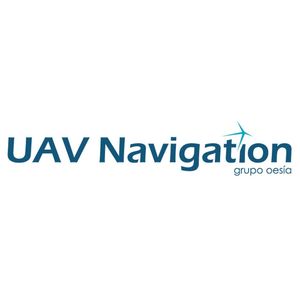Europe has recently released a new set of regulations for UAVs, which are operation-centric and, therefore, identify and segregate operational risks, after which they mandate mitigations. Within the existing categories according to such regulations, the specific category is highly relevant since it includes operations with a high added value, such as firefighting, maritime rescue, coastal surveillance, etc.
In this context, the U-SCUAR strategic project is proposed. Its core objective is to undertake advanced research in the field of unmanned aerial system operations in the specific category to develop an innovative UAS system that can fulfil the requirements laid down under SORA.
The project activities are framed in the development of a VTOL platform, and the guidance and control system will be provided by UAV Navigation-Grupo Oesía, which will implement innovative solutions that are laser-focused on operational safety. This will be achieved by developing modular architecture with advanced flight termination and fault-tolerant navigation capabilities that can face harsh and denied environments. It also ensures advanced integration of intelligent payloads to expand operational capabilities and autonomy.
The company will explore novel methodologies that enable collaborative missions and real-time mission planning autonomously, flexibly, and dynamically. This enables quick response through a heterogeneous network of UAS/RPAS to multiple changes in the environment, such as other traffic, no-fly zones, changes in mission objectives, etc. Most importantly, this is achieved without the direct intervention of a human operator, optimising the performance of each node in the network.
Furthermore, UAV Navigation-Grupo Oesía will also support the integration of the U-Space services, both for the interactions with the control station and the onboard systems, to adapt to the needs of the current airspace in the very low level.
The new U-SCUAR system will feature the most innovative and sophisticated solutions. This includes advanced artificial vision, sensor fusion for automatic landing on moving platforms, and automatic identification of points of interest to increase situational awareness.
The project puts forth the roadmap for development aligned with the SORA methodology and the EU’s UAS regulations. One that enables operations in medium-risk SAIL III and IV levels to provide the platform with the highest efficiency and safety standards.
Yet another point of focus would be to comply with the U-Space services, which remain focused on keeping airspace secure within a controlled environment. Furthermore, the project explores the possibility of developing a hybrid propulsion system that will make it easier for this system to present low emissions, aligned with the objectives of the Aeronautical Plan.
The Wake Engineering Company will lead the development of U-SCUAR and spearhead all others that bring in technological capabilities. For this, Wake Engineering partners with UAV Navigation-Grupo Oesía, Pildo Consulting, Aurea Avionics and Aeromedia UAV, and AICIA, UPM and CATEC also contribute as research technological institutions. The project has been financed by CDTI, co-financed by the Recovery and Resilience Mechanism, and supported by the Ministry of Science and Innovation. The combined goal is to develop a workable U-SCUAR prototype for the various operating environments.
 Unmanned Aerial Vehicle The latest drone news
Unmanned Aerial Vehicle The latest drone news


